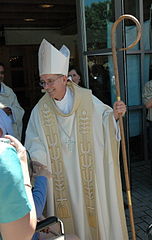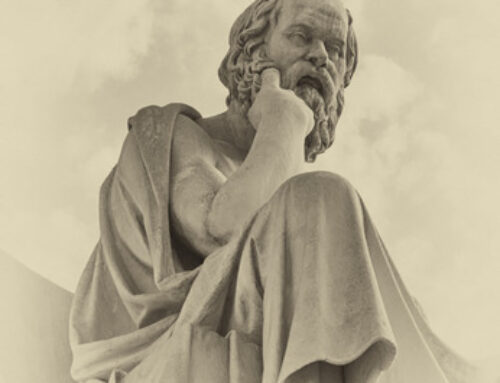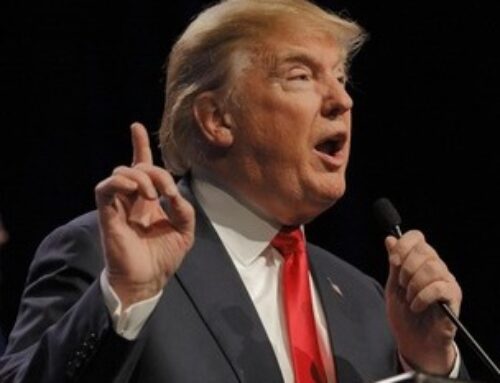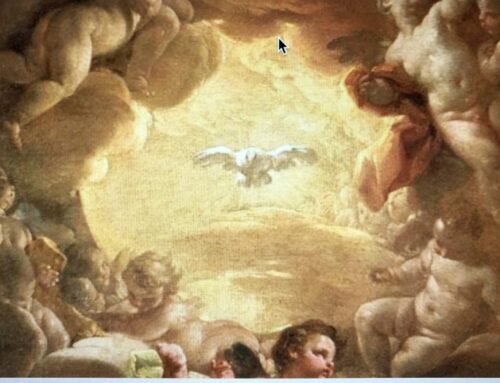
I was recently reminded of Chesterton’s observation while reading an essay by Bishop Mark J. Seitz of El Paso, who is also Migration Chairman of the United States Council of Catholic Bishops (USCCB) and in that role speaks and writes on matters concerning immigration. The essay in this case was titled, “Look at the border through the eyes of migrants.” The Jesuits at America Magazine were impressed enough to make it a Cover Story Selection. Taken together, the Bishop’s membership in the Catholic hierarchy, his position in USCCB, and the Jesuits’ promotion of the essay ensure that the message will have widespread influence in the United States and likely beyond. I find that disturbing because the essay is deeply flawed. To borrow Chesterton’s phrasing, it deals with the easy part of the border issue and denies the hard part.
The Bishop begins by speaking of “pivotal figures” who “have the ability to see multiple sides of an issue and thus can transcend the blinders that can constrain our imaginations,” mentioning in particular St. Ignatius Loyola, Bartolomé de las Casas, Gustavo Gutiérrez, and Pope Francis, all of whom he claims “see history from the perspective of ‘the other,’ as if [they] were the other.” He explains that he tries to follow this example by seeing illegal entry into the U.S. through the eyes of migrants. And he repeats several times the importance of all Americans doing the same. For example, he says, “If we were migrants, indeed our opinions would be very different [from those who call the border a ‘crisis.’]” “If we were migrants, if we were hungry, if we were abused and exploited women, if we were politically persecuted, if we were trying to reunite with family on the other side of the border—would not our opinions be very different indeed?” “We need to continually ask the question: What if we were refugees, if we were undocumented?”
No reasonable, fair-minded person would disagree with the idea of expanding our perspective by seeing through others’ eyes. Indeed, doing so is an essential aspect of seeking the truth about any issue. However, it is important that we avoid limiting our “seeing” to those we are sympathetic toward and extend it as well to those we disagree with. Also, that we keep clearly in mind that anyone’s perspective, including our own, could be mistaken, a thought which encourages open-mindedness.
Did Bishop Seitz observe these precautions? Let’s look more closely at his essay and see.
He speaks of “prosaic realities of border enforcement and border walls and broken immigration laws, [and] the posturing and compromises of politicians . . . We can all see how the border is represented by politicians, pundits and the media. One of the most troubling examples of this is when the border and migration are spoken about in terms of ‘a crisis.'” Then, after acknowledging that the number of people arriving at the border creates “political, social and logistical challenges,” he adds that some people “abuse the language of crisis in order to present migration at the border as fundamentally problematic, as something to fear and as a perilous threat.” This, he claims is “not just willful mischaracterization but often part of a deliberate, historical project of dehumanization at the border.” [Boldface added]
The words in boldface give no indication of seeing through the eyes of those he speaks of. Instead, they show condescension toward them topped off with an accusation of behavior that would qualify as mortal sin! And that’s just for openers.
The Bishop next calls the designation of crisis a “reductionist approach [that] is a manipulative, mediocre and fearful type of thinking that must be challenged.” In reality, he says, “border communities are beautiful, safe, diverse, economically and culturally vibrant communities . . .living, breathing organisms”. . . that respect “the rights of asylum-seeking persons and vulnerable migrants [that] are enshrined in our national law and in international law for a reason,” and adds that migrants not only have legal rights but “contribute in ways uncountable to our nation’s prosperity, vitality and resilience and cannot be scapegoated for our nation’s ills.” [Boldface added]
The Bishop also decries politicians speaking “unreasonably and irresponsibly of ‘shutting down the border,’ as if one could, with the stroke of a pen, shut down a living organism” and suggests those who did so “were considering suspending our obligations to the vulnerable just because they became politically inconvenient.” Such approaches to border problems he claims are unjust and “impose a draconian and vengeful agenda.” [Boldface added]
The Bishop reserves special criticism for Texas elected officials, writing “You have seen the Humvees and the concertina wire and the National Guard soldiers on television. While these actions are transparently political, . . . they are part of a broader brutal historical project in Texas to criminalize and police people who migrate, people of color.” He calls them “racist projects.” [Boldface added]
Surely the people the Bishop is demonizing would not see themselves in the way the Bishop suggests. Did he even try to treat them as he does illegal aliens? That is, to look through their eyes, imagine that their motives might be honorable and consider that their actions might be somewhat reasonable and even wise? The pattern of his essay suggests he did not, but instead assumed the worst judgments he could make were true. Not only does he not love these neighbors. He doesn’t even give them the benefit of the doubt. His assessment of them seems to be bad intentions and conscious evil deeds all the way, rather like Hilary calling MAGA people “baskets of deplorables.”
So far, I have been examining what Bishop Seitz says in his essay. Now I’ll turn to the things he doesn’t say, which are at least as important because they demonstrate his failure to achieve his goal “to see multiple sides of an issue and [thereby] transcend the blinders that can constrain our imaginations.” Here is a short list of what he doesn’t acknowledge:
The Bishop doesn’t acknowledge that by entering the country the “migrants” as he repeatedly calls them, violate U.S. immigration laws, and if ignored, have a negative impact on the culture. Nor does he mention that the number of illegals living in the country is significant. As of 2021, that number was 10.5 million.
The Bishop doesn’t acknowledge that border crossings have reached the level of crisis, but instead mocks the idea. Yet Snopes organization (in no way conservative) classifies the following statement as TRUE: “As of January 2024, more than 7.2 million migrants had illegally crossed into the U.S. over the Southwest border during U.S. President Joe Biden’s administration — a number higher than the individual populations of 36 states.”
The Bishop doesn’t acknowledge the fact that not every “migrant” has a legitimate claim for asylum. In fact, the way he speaks of them suggests he believes they all have legitimate claims, and that those who say otherwise are “vengeful,” “manipulative,” and/or “racist.” Yet factcheck.org says otherwise, stating that it would be “accurate to say that [only] 16% of people who apply for asylum after making a claim of credible fear have an eligible asylum claim.” Sixteen percent!
The Bishop doesn’t acknowledge the widely reported fact that some “migrants” are members of cartels or criminals who are not seeking a better life for their families but instead a place to sell drugs or force young women into prostitution. Nor does he mention the concerns about Chinese nationals crossing the U.S. border: “In the fiscal year 2023, around 37,000 people of Chinese descent were arrested of which, 24,125 were caught till the month of April,” and Brandon Judd, head of the Border Patrol agent’s organization, says most Chinese crossers were single adult males of military age.
The Bishop doesn’t acknowledge the legal question of whether governmental or religious organizations’ aid to illegal immigrants ever constitutes “aiding and abetting” their crime. Or the moral question of whether such aid in any way encourages more people to illegally enter the U.S.
Ironically, the conservatives that the Bishop derides for their ignorance (or worse) have somehow managed to understand and acknowledge the many things he does not. Why he failed is difficult to comprehend, as is why the Jesuit editors at America Magazine didn’t see the problem and caution him. Maybe both really believe that letting millions of people migrate to one country is the kindest, wisest way to solve the problem of poverty in the world. But whatever the reason, it has put the Bishop in the awkward position of rejecting the very open-minded analytical approach he admired in St. Ignatius and others, recommended to the rest of us, and hoped to master himself.
I feel embarrassed for the Bishop and sympathetic for the people who accepted his essay at face value and were misled, but thankful there are some who see multiple sides of the border issue and transcend the blinders that evidently strained his imagination.
Copyright © 2024 by Vincent Ryan Ruggiero. All rights reserved.


